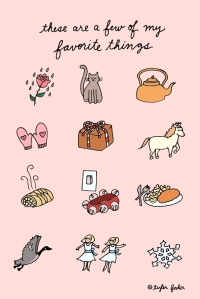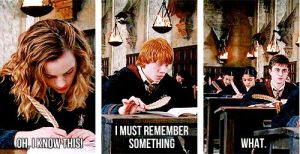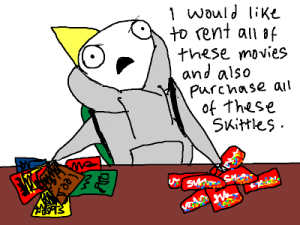The month of May I took a sabbatical to Seattle, where my friend and playwright/screenwriter (the indomitable Katherine Gee Perrone!) helped me plot my latest novel. Because when you’re stuck, ask for help! Writing doesn’t always have to be a completely solitary vocation. But I digress. The most helpful part of our plotting session was learning some good screenwriting terminology that helped me cement in my mind how I like plots to be constructed, both as a reader and as a writer.
“Beats lead to beats!” she’d say every time I got stuck. And isn’t that the true essence of plot–more so than, say, “stuff happens” or “the characters did stuff”?
Just to make the terminology clear, in screenwriting, a beat “refers to an event, decision, or discovery that alters the way the protagonist pursues his or her goal” (via Dr. Wikipedia). Even if your character goes to the store to pick up a gallon of milk, how does that affect the story? (Granted, some readers like books where Stuff Happens that isn’t obviously moving the plot forward, so YMMV).
Speaking to the zeitgeist, I see two different ways this is employed in storytelling. One is the Outlander model, more episodic than any novel I’ve read. Each chapter of Outlander feels self-contained, so while some beats lead to the next beat within the chapter, many of the events of each chapter only yield consequences further down the line. The advantage of episodic storytelling is to give the reader time and space to feel immersed in the world–and the Highlands of 1743 is a world I don’t mind being a tourist in. Still, as I’m reading I can see that something that Claire and Jamie do or say will affect the plot later in the novel, so I’m never disoriented by having lost the “thread” of the plot.
The second method is the style of storytelling employed by Mad Max: Fury Road. The pace is breakneck. Each character’s decision leads to immediate and forceful consequences. What with the action scenes and blocking, the plot of MM:FR feels like a Rube Goldberg machine–in some action scenes, I mean this statement literally. The advantage in this method (manifold) is that your reader feels a sense of danger and urgency but also continuity. It’s not hard to keep track of where each character is in their arc, because the story doesn’t give you time to forget. The character Nux is the best example of this, since his arc is the most dramatic, (SPOILER AHEAD) going from being a minion of the villain to an ally of the protagonists. The scene where he “turns” from one side to the other makes sense, even given how short it is and with such little dialogue, because we’ve JUST seen him mess something up (END SPOILER)…no time is wasted with the dialogue remind the audience of what Nux has already been through and where his head is at.
A nice thing about plotting with a “beat leads to beat” style is that you can get a nice mix of character-driven and event-driven plot (internal forces vs external forces driving the story forward), because a beat can be decisions that come straight from the characters and also external events and circumstances. However, for me, the advantage of keeping this phrase in mind while plotting is that the plot feels like there is a continuous thread tying it all together. That sense of continuity is ubiquitous in Western storytelling, and your readers are probably looking for that.






